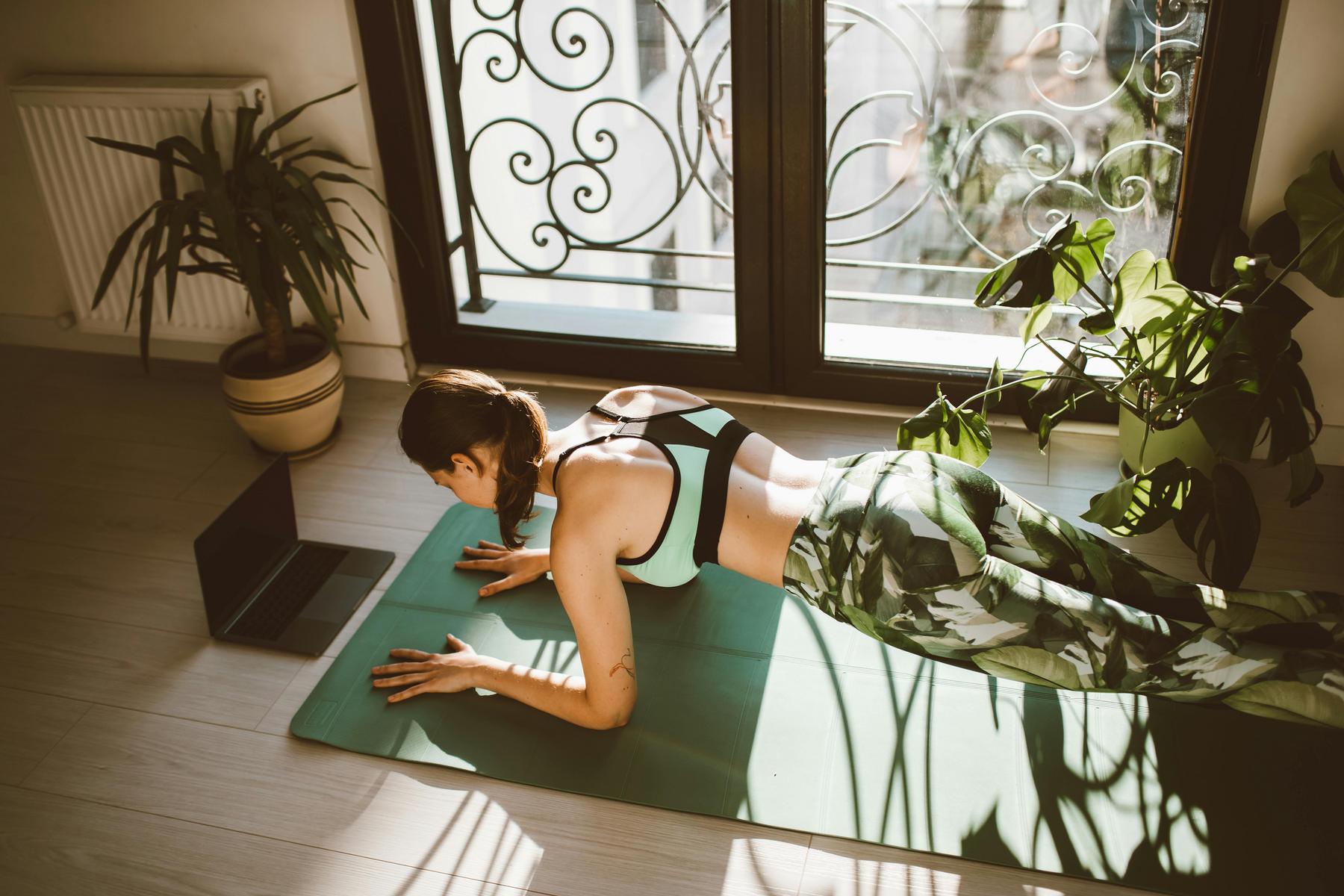In today’s fast-paced world, finding time to visit a gym has become increasingly challenging for many Australians. The good news? Research demonstrates that well-designed home workout circuits can deliver comparable—and sometimes superior—results to traditional gym sessions. With space requirements as minimal as 2-4m², strategic equipment selection, and evidence-based programming, you can create efficient, effective workout circuits without leaving your living room.
What Is Circuit Training and Why Is It Effective?
Circuit training represents a scientifically validated approach to fitness that combines resistance exercises with minimal rest periods, creating a dual training effect that traditional workout styles struggle to match. This hybrid structure simultaneously develops muscular strength and cardiovascular fitness—a combination particularly valuable for sustainable weight management.
The physiological benefits are well-documented. Circuit training induces muscular hypertrophy through mechanical tension while elevating heart rates sufficiently to stimulate cardiovascular adaptations. Research shows circuit training’s metabolic advantage over traditional cardio for fat loss, with participants burning up to 30% more post-exercise calories due to excess post-exercise oxygen consumption (EPOC).
This metabolic afterburn effect explains why circuit training elevates resting metabolic rate by 4-7% through lean muscle preservation, contrasting sharply with the muscle catabolism risks associated with steady-state cardio. For Australians balancing busy schedules with health goals, circuit training delivers maximum physiological benefit within minimal time frames—perfectly aligning with the Australian physical activity guidelines recommending 150-300 minutes of moderate-intensity weekly exercise.
How Do You Design a Home Circuit Workout Program?
Creating an effective home circuit requires attention to exercise selection, work-rest intervals, and progressive overload principles. The optimal approach follows these evidence-based structural guidelines:
Exercise Sequencing
Alternate pushing and pulling movements while rotating between upper and lower body focus. This sequencing permits localized muscle recovery while maintaining elevated heart rates. For example:
- Squats (lower body push)
- Push-ups (upper body push)
- Lunges (lower body pull)
- Inverted rows (upper body pull)
- Plank (core stability)
Intensity Modulation
Beginners should maintain 60-70% heart rate reserve (HRR) with 1:2 work-rest ratios (e.g., 30 seconds work, 60 seconds rest). As fitness improves, progress toward 80-90% HRR with 2:1 ratios (e.g., 40 seconds work, 20 seconds rest).
Periodization Strategy
To prevent plateaus and optimize adaptations, rotate emphasis every 4-6 weeks between:
- Endurance phases (15-20 repetitions per exercise)
- Hypertrophy phases (8-12 repetitions per exercise)
- Strength phases (4-6 repetitions per exercise)
Research from 2025 reveals that home circuit practitioners maintain 89% workout adherence versus 67% for gym-based programs—a difference attributed to reduced logistical barriers and consistent accessibility.
What Equipment Do You Need for Home Circuit Training?
While bodyweight exercises provide a solid foundation, strategic equipment additions enable long-term progression through increased resistance and exercise variety. The following equipment hierarchy presents optimal investments for sustained development:
| Equipment Type | Investment Range (AUD) | Progression Applications |
|---|---|---|
| Resistance Bands | $15–$50 | Variable tension for squats, rows, shoulder presses |
| Adjustable Dumbbells | $200–$500 | Incremental loading (2.5kg steps) for compound lifts |
| Suspension Trainer | $80–$150 | Unstable plane training for enhanced core engagement |
| Smart Jump Rope | $30–$100 | HIIT intervals with rep counting via gyroscopic sensors |
These equipment choices reflect the expanding Australian home fitness equipment market, which is projected to grow at 2.5% CAGR through 2034. Importantly, telehealth exercise physiologists now regularly prescribe such equipment, with 73% of remote clients maintaining consistent training versus 58% attending in-person clinics.
For beginners or those with limited budgets, household items provide effective alternatives:
- Filled water bottles or detergent containers as weights
- Sturdy chairs for elevated push-ups and tricep dips
- Backpacks filled with books for weighted exercises
- Towels on smooth surfaces for slider exercises
How Can You Optimize Your Space for Home Circuit Workouts?
Effective home circuits require surprisingly little space when implemented with spatial awareness. The following optimization strategies maximize training potential in typical Australian homes:
Vertical Training Zones
Utilize wall and door spaces by mounting resistance bands on door anchors for lat pulldowns, face pulls, and rotational presses. This vertical approach dramatically expands exercise options without increasing floor space requirements.
Multi-Functional Furniture Integration
Transform household furniture into workout stations:
- Kitchen counters for incline push-ups
- Sturdy chairs for step-ups, box jumps, and tricep dips
- Sofa edges for decline push-ups and Bulgarian split squats
- Coffee tables for elevated planks and hip thrusts
Outdoor Extensions
Australian climate advantages allow for outdoor expansions of circuit stations:
- Garden stairs for step-ups and plyometric drills
- Backyard spaces for shuttle runs or jumping exercises
- Verandas for weather-protected training zones
These space-efficient approaches explain why home-based exercisers report 22% higher workout frequency than gym members—proximity and convenience eliminate significant adherence barriers.
How Should You Progress Your Home Circuit Training Over Time?
Progressive overload remains the fundamental principle for continued improvement, regardless of training environment. For home circuits, implement these evidence-based progression methods:
Phase 1: Foundation Building (Weeks 1-4)
Circuit Structure: 45 seconds work/90 seconds rest, 2 rounds
- Goblet squat using water jug or dumbbell
- Incline push-up with hands on raised surface
- Single-leg Romanian deadlift for balance development
- Seated resistance band row anchored to door
- Plank shoulder taps for core stabilization
During this phase, focus on technique mastery and building baseline conditioning.
Phase 2: Metabolic Conditioning (Weeks 5-8)
Circuit Structure: 30 seconds work/15 seconds rest, 4 rounds
- Burpee to vertical jump for power development
- Alternating reverse lunge with twist for rotational challenge
- Plyometric push-up or regular push-up for explosive chest training
- Mountain climbers for cardiorespiratory emphasis
- Dynamic side plank for lateral chain engagement
This phase introduces higher intensity and metabolic demand, amplifying calorie expenditure and cardiovascular adaptation.
Advanced Progression Variables
As fitness improves, manipulate these variables to maintain progressive overload:
- Decrease rest intervals systematically
- Increase repetitions or time under tension
- Add compound movement complexity (e.g., lunges to lunge jumps)
- Introduce unilateral (single-limb) variations
- Incorporate isometric holds at challenging points in the range of motion
What Are the Best Circuit Training Exercises for Home Workouts?
The most effective home circuit exercises meet three criteria: minimal equipment requirements, compound movement patterns, and scalability for different fitness levels. The following exercises represent optimal selections for home circuits:
Lower Body Foundations
- Bodyweight squat → goblet squat → jump squat progression
- Walking lunge → reverse lunge → plyometric lunge progression
- Glute bridge → single-leg glute bridge → weighted glute bridge progression
Upper Body Fundamentals
- Wall push-up → standard push-up → decline push-up progression
- Resistance band row → inverted row → weighted row progression
- Pike push-up → wall handstand push-up → handstand progression
Core and Functional Movements
- Plank → side plank → dynamic plank variations
- Bird dog → dead bug → hollow body hold progression
- Mountain climber → cross-body mountain climber → plyo mountain climber
These exercise progressions allow continuous advancement without requiring significant equipment investments. Research indicates that compound movements within circuit formats elicit up to 41% greater hormone responses than isolated exercises, enhancing overall metabolic benefits.
The Future of Home-Based Circuit Training
The convergence of evidence-based exercise science with emerging technologies has revolutionized home workout effectiveness. Australian innovators are now piloting virtual reality circuits where users compete against 3D opponents or navigate digital obstacle courses through functional movements. These immersive approaches increased user enjoyment by 41% in recent trials compared to traditional circuits.
For those seeking structured guidance, telehealth exercise physiology services now offer:
- Real-time movement analysis via webcam technology
- Biometric integration with wearables to adjust circuit intensity
- Virtual group circuits creating social accountability
These technological enhancements explain why 89% of telehealth-guided circuit participants maintained adherence versus 54% following standard advice—a difference with profound implications for long-term health outcomes.
The evidence is clear: well-designed home circuits deliver comparable physiological benefits to gym-based training while offering superior adherence rates. By implementing the principles outlined in this guide, you can construct effective, progressive workout circuits tailored to your space, equipment, and fitness level.
How many days per week should I do circuit training at home?
For optimal results, perform circuit training 3-4 days per week with at least one rest day between sessions. This frequency aligns with Australian physical activity guidelines recommending 150-300 minutes of moderate-intensity weekly exercise while allowing sufficient recovery. Beginners should start with two weekly sessions and gradually increase frequency as conditioning improves.
How long should my home circuit workout last?
Effective circuit workouts typically range from 20-45 minutes, including warm-up and cool-down periods. Research demonstrates that 30-minute high-intensity circuits can deliver equivalent or superior results to longer, moderate-intensity traditional workouts due to increased metabolic demand and post-exercise oxygen consumption effects.
Can I build muscle with home circuit training?
Yes, home circuit training effectively builds muscle when designed with progressive overload principles. While traditional hypertrophy training employs heavier weights with longer rest periods, circuit training can induce significant muscle growth through mechanical tension, metabolic stress, and time under tension—particularly when incorporating resistance bands, adjustable dumbbells, or bodyweight progression exercises.
How do I modify circuit training if I have limited mobility or joint issues?
Modify exercises by reducing range of motion, decreasing impact, or utilizing supportive surfaces. For example, perform chair squats instead of full squats, step-backs instead of lunges, or wall push-ups instead of floor push-ups. Always prioritize quality movement over intensity or volume, and consider consulting an exercise physiologist who can provide telehealth guidance for personalized modifications.
What’s the best way to track progress with home circuit training?
Track multiple metrics beyond weight, including: work capacity (total repetitions completed in fixed time), recovery rate (heart rate decrease during rest intervals), exercise progression (advancement to more challenging variations), performance measures (time to complete circuit, weight used), and body composition changes (measurements, photos). This multi-factorial approach provides more accurate progress assessment than single metrics alone.



